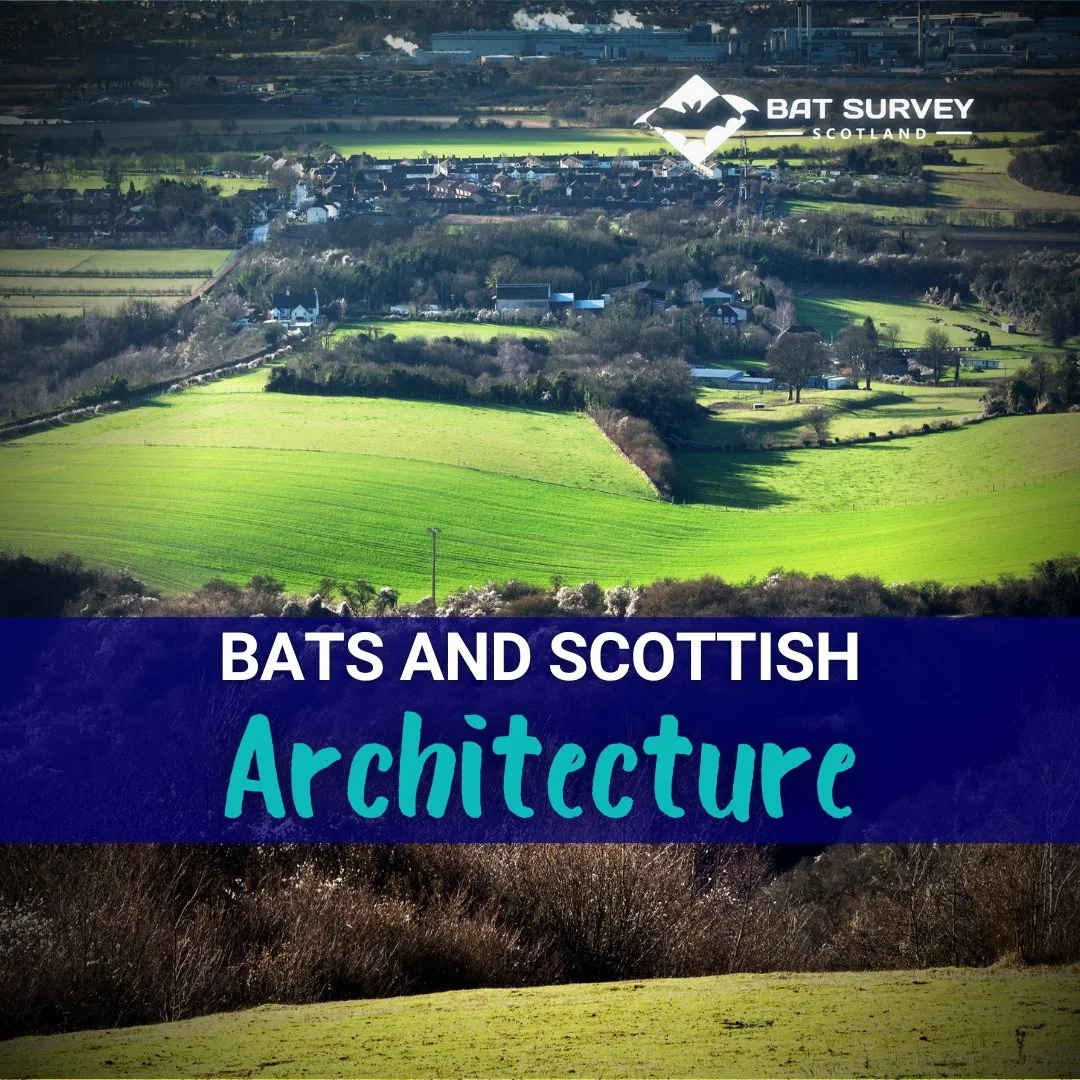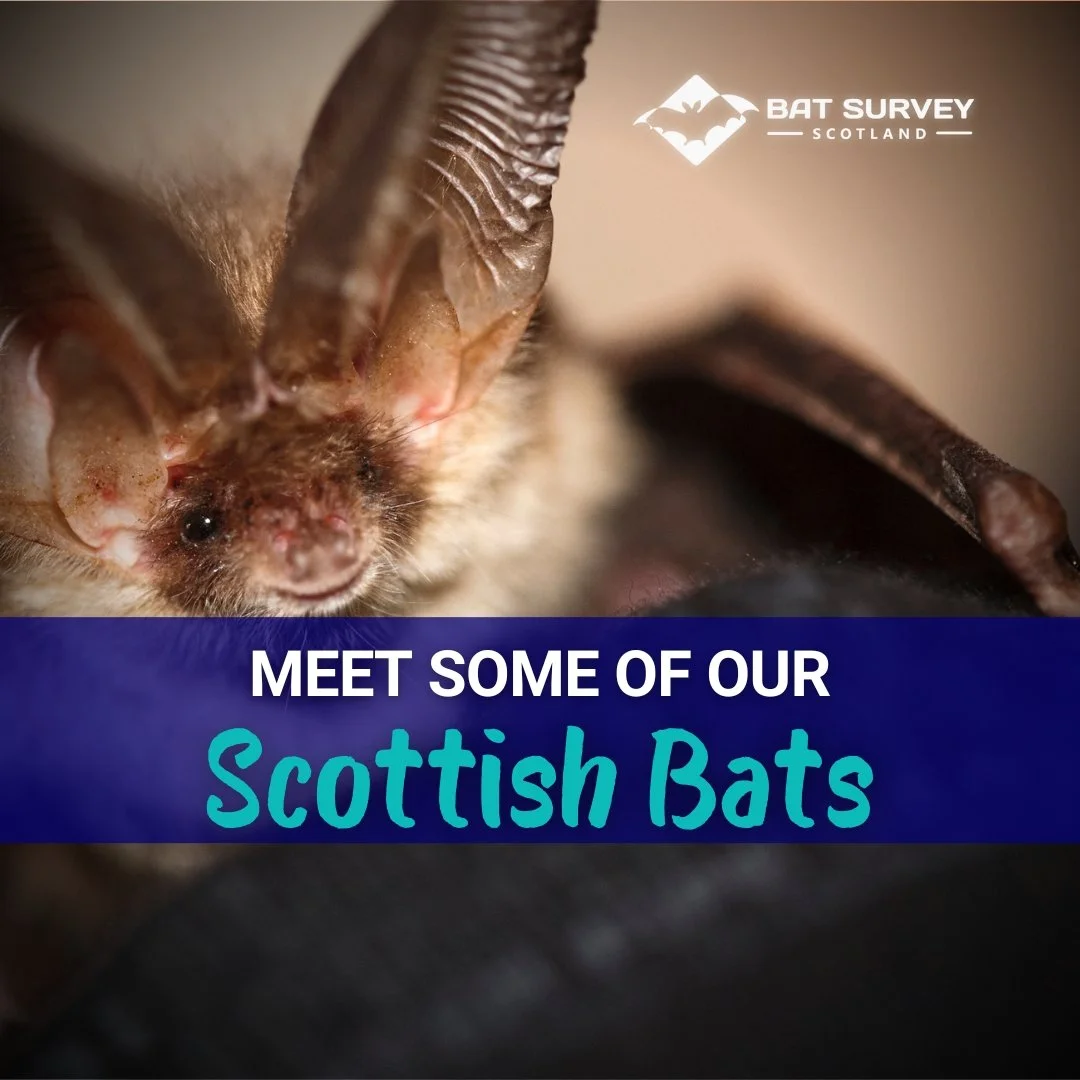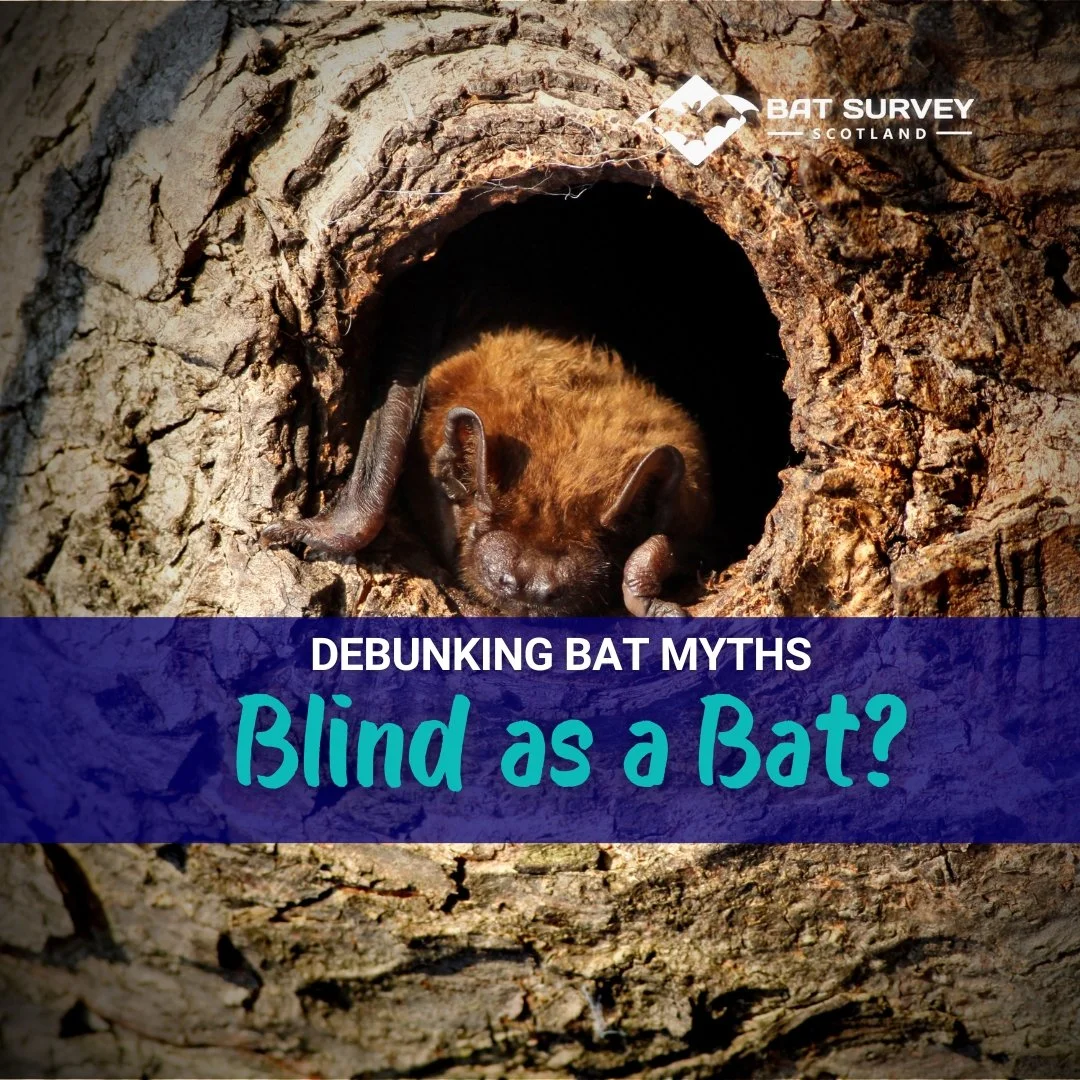
Bats and Scottish Architecture
Just as you can tell the difference between an Aberdonian street and one from the Scottish Borders, so do Scottish bats! The differences in materials, building techniques and structural features across Scotland have a considerable influence on the roosting opportunities for bats. While your house may break the regional mould, here are some trends we’ve spotted across Scotland and how they impact if bats will roost in your property…

Meet Scottish Bats
Scottish bats range from 5g pipistrelles, to Noctules with a 35cm wingspan. Here’s a quick introduction to the bats who call Scotland home!

Are Bats Pests or Pest Controllers?
Far from being a pest, bats are key pest controllers. For starters, they play a key role in reducing midge populations!

Blind as a bat? debunking bat myths
‘Blind as a bat’ dates back to Aristotle, but is there any truth to this bat myth?

Bat roosts in trees
All Scottish bat species will use trees to roost. Identifying tree roosts can be challenging, especially in summer when leaves can make for tricky viewing. Fortunately, there are some features and signs we can use to identify roosts (and roost potential) when conducting tree surveys.

Why Are Hibernacula so important?
Over winter, many of our native mammals ‘power down’ and rest to conserve energy. For some, this is a reduction in activity and tendency towards staying in their shelters. For bats and hedgehogs (and dormice in the south of England) this is a huge physiological change, resulting in a dramatically reduced metabolism, with decreased body temperature, breathing and heart rates. This change is known as hibernation, and is a distinct adaptation to conserve energy.

How do bats choose roosts in urban areas?
Understanding how bats choose where to roost is where we start with your bat surveys. This blog is a basic overview, so if you think you might have bats roosting and they’ll be impacted by a renovation or development, get in touch with us today.


Hair-Raising Bat Myths: What If It Gets in My Hair?!
Have you ever been worried about a bat getting in your hair? Well, we’re here to reassure you that is extremely unlikely to happen!

Are Vampire bats real?
Another blog, another bat myth busted. This time, vampire bats - are they real? And if so are you likely to encounter one?

From Flappy Mouse to Bat: A Linguistic Journey
Why are bats called bats? Take a look at the etymology behind ‘bat’, and the entertaining names for bats in other languages.
